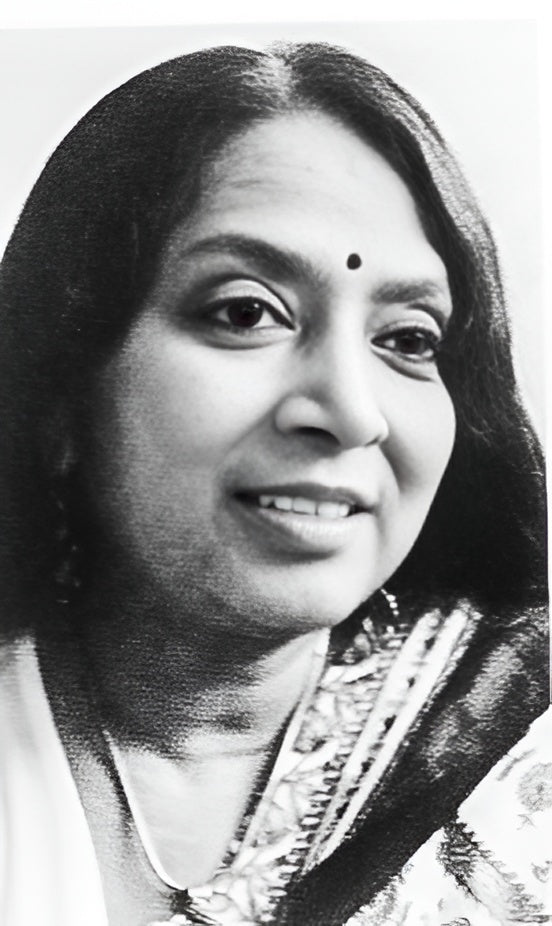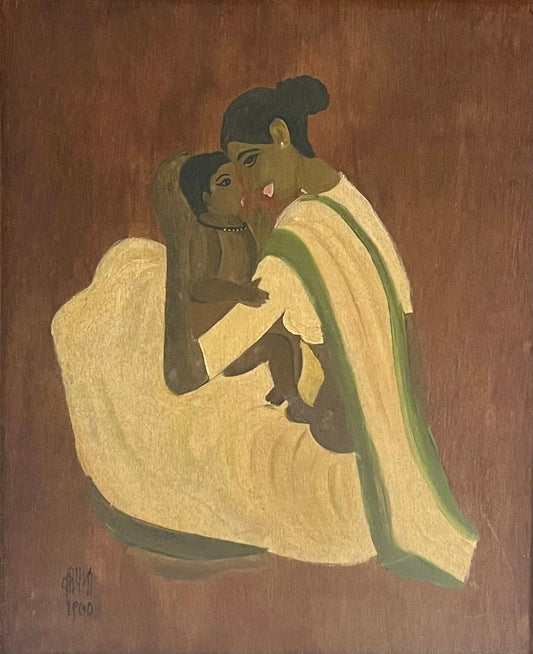
B. PRABHA
B. Prabha occupies a significant position in the trajectory of modern Indian art, particularly as one of the few women artists of her generation to assert a distinct visual language in the mid-twentieth century. Born in 1933 in Bela, near Nagpur, Maharashtra, Prabha’s artistic sensibility was shaped by her early exposure to rural life and the quiet resilience of women in agrarian communities. Her formal training at the Nagpur School of Art and later at the Sir J.J. School of Art, Mumbai, provided her with a strong foundation in modernist aesthetics while encouraging her to develop a deeply personal vocabulary rooted in empathy and social observation.
Emerging at a time when Indian art was negotiating its postcolonial identity, B. Prabha’s work bridged the modernist concern for form and color with a socially conscious realism. Initially experimenting with abstraction and various media, she eventually turned to oil on canvas, a medium that allowed her to achieve a luminous flatness and compositional grace. Her stylistic evolution coincided with her marriage to fellow artist B. Vithal in 1956, a period that marked her transition from abstraction to a more figurative mode. Together, the couple’s joint exhibitions reflected a dynamic dialogue between form and emotion, but Prabha’s art soon distinguished itself through its focus on the female experience.
Prabha’s signature elongated figures of women, often rural, melancholic, and dignified, came to define her mature style. Rendered in muted tones with minimal backgrounds, these figures serve as emblems of both suffering and strength. Through simplified lines and controlled color palettes, Prabha transformed her subjects into universal symbols of endurance, addressing issues such as drought, poverty, and social inequality. While her women appear stylized, they are never idealized; rather, they articulate a profound empathy for the marginalized. In this sense, her practice can be read as an early feminist gesture within the context of Indian modernism.
Her participation in exhibitions such as the Bombay State Art Exhibition (1958), where she won first prize, and solo shows at Kumar Gallery, Delhi (1959, 1961), positioned her firmly within the narrative of post-independence Indian art. Later retrospectives and posthumous exhibitions, including ‘Shradhanjali’ (1993), ‘Winter Moderns’ (2008), and ‘Pot Pourri’ (2008), reaffirm her enduring legacy. B. Prabha’s oeuvre stands at the intersection of modernism and social realism, blending aesthetic restraint with moral intensity. Her women are not mere subjects of rural life but icons of human perseverance, quiet witnesses to the evolving story of a nation and its art.

